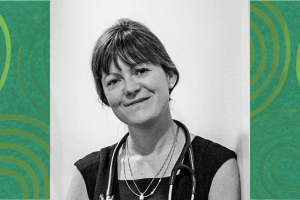Dr Angela Dos Santos
Stroke in Aboriginal and Torres Strait Islander Australians
Abstract
Stroke is a global health concern, ranking as the second leading cause of death and the third greatest cause of disability worldwide. Indigenous Peoples, constituting 470 million individuals across 90 countries, experience a disproportionate impact from stroke, with higher incidence and mortality at younger ages, increased prevalence of cardiovascular risk factors, and lower treatment rates. The ongoing impact of colonisation and structural racism (all the various ways in which societies perpetuate racial discrimination by establishing interconnected systems within housing, education, employment, earnings, benefits, health care, and criminal justice) contribute to these disparities.
To address these issues, a narrative review aims to outline stroke incidence rates, common risk factors, and treatment rates among Indigenous populations compared to non-Indigenous counterparts. The study emphasises a ‘strengths-based’ approach driven by Indigenous People. Two prospective studies, one conducted in South Australia and the Northern Territory and another in Wagga Wagga, Australia, shed light on the challenges faced by Aboriginal and Torres Strait Islander Peoples. The former, focusing on stroke incidence, revealed that Aboriginal Peoples had a three-fold higher age-standardised stroke incidence, occurring at a much younger age, with deficiencies observed across the continuum of care. The latter study at Wagga Wagga Rural Referral Hospital found that Aboriginal and Torres Islander Australians with stroke were a decade younger, had higher prevalence of risk factors, and exhibited delayed hospital presentation due to under-recognition of stroke symptoms. However, when admitted to a specialised stroke unit, treatment rates and outcomes were comparable. In the realm of acute stroke diagnosis, and wanting to improve stroke care in regional, rural and remote Australia, where 20% of Aboriginal and Torres Strait Islander Peoples reside, the final study explored the use of an automated hypodensity detection algorithm (HDT) to improve clinicians’ accuracy in identifying early changes on non-contrast CT scans. The HDT demonstrated potential, increasing overall clinician accuracy and proving particularly beneficial for smaller lesions and less experienced clinicians.
In conclusion, these studies collectively highlight the urgent need to address the disparities in stroke incidence, care, and outcomes for Aboriginal and Torres Strait Islander Peoples. A comprehensive, population-based approach is crucial, incorporating cultural sensitivity, education, and healthcare accessibility to bridge the existing gaps in stroke management and prevention.
Supervisors
School
Medicine, Royal Melbourne Hospital
